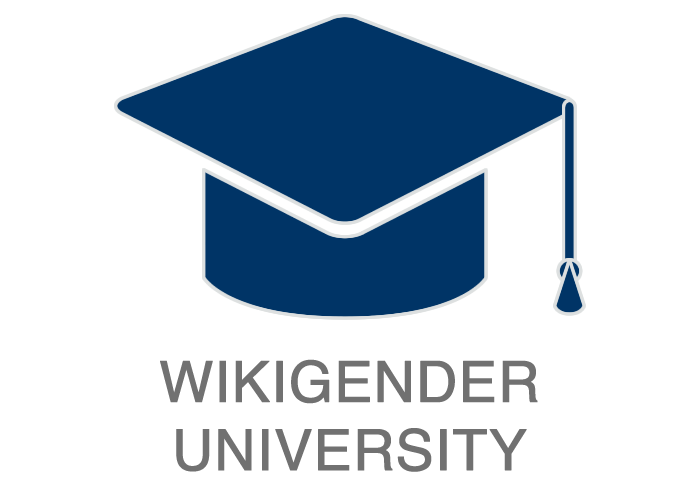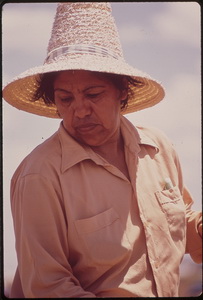The Integration of Female Migrants in Thailand

- Bulleted list item
The integration of female migrants in Thailand
 Source:http://commons.wikimedia.org/wiki/File:MIGRANT_WORKER_IN_FIELD_-_NARA_-_543864.jpg Seeking a better life is a human desire, and migration is a way for people who live in a less developed country to realise that goal. Migration to a more developed country can improve the life of a migrant, but sometimes the life of a migrant can become worse.Paradoxes of Integration: Female Migrants in Europe.Retrieved 27July 2013 from http://www.springer.com/social+sciences/population+studies/book/978-94-007-4841-5There are mostly Lao, Cambodian or Myanmar migrants in Thailand, which is a better place particularly as languages and traditions are similar but is still limited in respect to access to health care services, information and other health problems by their survival struggle in earning their “golden dream income”. Since most of migrants are from rural area, they notice their tenuous legal status and many treats which are quite limited to accessing to healthcare services and legal systems, migrants endure poor working and living conditions without being able to receive suitable treatment for related health conditions. The integration of female migrants in Thailand depends on the living and working conditions of these migrants and can be improved by raising awareness about their rights and welfare among government officials, employers and members of migrant and host communities.Raising Awareness of Migrant Rights and Obligations in Thailand.Retrieved 27 July 2013 from http://www.iom.int/cms/en/sites/iom/home/what-we-do/migrant-integration/raising-awareness-of-migrant-rightsbr.html The percentage of female migrants in registered immigration flows to Thailand was 30% in 2010 and was higher than emigration flows (17%). Most frequently, migrants entering Thailand under the framework of family formation or unification are women from the countries near Thailand such as Lao PDR , Cambodia and Myanmar . Migrant women entering Thailand in the last decade are confronted with a tight labour market, shrinking production and a decreasing number of regular jobs: an environment which offers newcomers few opportunities for good jobs. The main sectors open to female newcomers are the domestic, hospitality, agricultural and catering sectors. Migrants arriving in Thailand can be divided into three groups including legal migrant workers, illegal migrant workers and victims of human trafficking. In 2011, the migrants in Thailand (those who are qualified to continue their work as they have a permit and their nationality is proven) amounted to 91,356 people. Migrants are often part of the low-skilled labour force in Thailand, where most of them are young and have low education levels (about 50% attended only primary school). In addition, most are involved in the ‘3D’ jobs (which stand for Dirty, Dangerous and Difficult). The health impacts among the migrants are wide-ranging, from deleterious impacts on physical and mental health to the contraction of both communicable and non-communicable diseases. Substandard and unsuitable living conditions significantly affect the physical and mental well-being of migrants and their families. Social, culture and language barriers, their legal or illegal status in Thailand, lack of money and mistrust in the health care sector may affect migrants’ willingness to seek out health care when they need it. Lack of safety and poor occupational health practices at migrants’ workplaces in many countries have been observed. In particular, 50% of the total migrants are women, and they have limited access to health and social services, particularly the undocumented ones. They are susceptible to more pressure from the environment such as bad living conditions, lack of health checkups, low pay from their employer, poor food and drink etc.
Source:http://commons.wikimedia.org/wiki/File:MIGRANT_WORKER_IN_FIELD_-_NARA_-_543864.jpg Seeking a better life is a human desire, and migration is a way for people who live in a less developed country to realise that goal. Migration to a more developed country can improve the life of a migrant, but sometimes the life of a migrant can become worse.Paradoxes of Integration: Female Migrants in Europe.Retrieved 27July 2013 from http://www.springer.com/social+sciences/population+studies/book/978-94-007-4841-5There are mostly Lao, Cambodian or Myanmar migrants in Thailand, which is a better place particularly as languages and traditions are similar but is still limited in respect to access to health care services, information and other health problems by their survival struggle in earning their “golden dream income”. Since most of migrants are from rural area, they notice their tenuous legal status and many treats which are quite limited to accessing to healthcare services and legal systems, migrants endure poor working and living conditions without being able to receive suitable treatment for related health conditions. The integration of female migrants in Thailand depends on the living and working conditions of these migrants and can be improved by raising awareness about their rights and welfare among government officials, employers and members of migrant and host communities.Raising Awareness of Migrant Rights and Obligations in Thailand.Retrieved 27 July 2013 from http://www.iom.int/cms/en/sites/iom/home/what-we-do/migrant-integration/raising-awareness-of-migrant-rightsbr.html The percentage of female migrants in registered immigration flows to Thailand was 30% in 2010 and was higher than emigration flows (17%). Most frequently, migrants entering Thailand under the framework of family formation or unification are women from the countries near Thailand such as Lao PDR , Cambodia and Myanmar . Migrant women entering Thailand in the last decade are confronted with a tight labour market, shrinking production and a decreasing number of regular jobs: an environment which offers newcomers few opportunities for good jobs. The main sectors open to female newcomers are the domestic, hospitality, agricultural and catering sectors. Migrants arriving in Thailand can be divided into three groups including legal migrant workers, illegal migrant workers and victims of human trafficking. In 2011, the migrants in Thailand (those who are qualified to continue their work as they have a permit and their nationality is proven) amounted to 91,356 people. Migrants are often part of the low-skilled labour force in Thailand, where most of them are young and have low education levels (about 50% attended only primary school). In addition, most are involved in the ‘3D’ jobs (which stand for Dirty, Dangerous and Difficult). The health impacts among the migrants are wide-ranging, from deleterious impacts on physical and mental health to the contraction of both communicable and non-communicable diseases. Substandard and unsuitable living conditions significantly affect the physical and mental well-being of migrants and their families. Social, culture and language barriers, their legal or illegal status in Thailand, lack of money and mistrust in the health care sector may affect migrants’ willingness to seek out health care when they need it. Lack of safety and poor occupational health practices at migrants’ workplaces in many countries have been observed. In particular, 50% of the total migrants are women, and they have limited access to health and social services, particularly the undocumented ones. They are susceptible to more pressure from the environment such as bad living conditions, lack of health checkups, low pay from their employer, poor food and drink etc.
Migration in Thailand
- Regular MigrationCurrent Migration Challenges in Thailand
- Legal migration (via passport,visa,temporary border pass under MOU)
- To work,travel,business, etc.
- Short-stay purpose
- Irregular Migration
- Illegal migration (people smuggling or human trafficking)
- Mostly seek a better life or better income
- Partly migrated due to specific reasons
- Tendency for long-stay
Women status of migrant population
Migrants in Thailand have to work in difficult and poor conditions, such as in construction sites, the agriculture sector, factories, bars and karaoke bars due to their illegal migration status. Consequently, they have to endure unsafe working conditions with long hours of work and low wages. They tend to live in poorer housing conditions, often crowded and with poor sanitary facilities. The government tried to change the status of migrants from illegal to semi-legal migrants by approval of the policy and regulation by the cabinet, which is completed annually. After the cabinet approval, Ministry of the Interior registers the undocumented migrants, and they receive physical checkups and a health insurance card from the Ministry of Public Health so that they can be granted a work permit from the Ministry of Labour. Every year, the government policy focus alternates between security and the economy. If the policy focusing on state security is approved, the registration is limited and the number of undocumented or unregistered migrants decreases. On the other hand, if the policy focusing on economic outcomes is implemented, the registration process is promoted and the number of registered or documented migrants increases.Migrants health in Thailand.Retrieved 26 July 2013 from http://www.femipol.uni-frankfurt.de/docs/working_papers/wp1/Germany.pdf Since 2008, the policy has changed to encourage semi-legal immigrants to become legal migrants via the nationality approval process by their respective countries, according to the bilateral agreement between Thailand and Cambodia , Lao PDR PDR and Myanmar . Regardless, at the time, there was still a small number of these registered migrants who got their nationality approved by their origin countries.
Migrant’s Health impact
Because of the different standard and quality of health service system among Thailand and its 3 neighboring countries, many migrants carries contagious diseases that were already controlled in Thailand. Pulmonary Tuberculosis, Syphilis, Leprosy, Malaria and Elephantiasis were the 5 most common contagions/communicable diseases. The Diarrhea, Influenza, Dengue hemorrhagic fever were more difficult to eradicate among the undocumented migrants in the urban area. These diseases can also spread into Thai people by many vectors and routes in the tropical climate. The sanitation and environment of the migrant’s communities are poor and because of the un-registration housing, due to the fact that these illegal immigrants are inapplicable to services from local authorities.
- Migrant health strategy
The Ministry of Public health would like to support the security focus policy by prevention of the communicable diseases and reduced the health impact to Thai people and also support the economy focus policy by providing healthy high productive labor to the market. In any case, the change in policy year by year causes difficulty to provide the health care services especially to the unregistered migrants. The Ministry of Public health is concerned about health of the migrants especially contagious diseases that are carried from their origin countries. The physical check up included chest radiography, blood test for Syphilis, Microfilariasis, Malaria and others diseases, urine test for amphetamine and pregnancy for female migrants, test for leprosy and others as request by the physicians as shown in Table 1.Migrants health in Thailand.Retrived 27 July 2013 from http://www.gfmd.org/documents/switzerland/moldova/gfmd_swiss11_moldova_presentation_s3-03b-Thailand-Tharathep.pdf
| Item | Male | Female |
|---|---|---|
| Chest X-Ray | 9 | 9 |
| Syphilis, Filariasis * | 9 | 9 |
| Urine Amphetamine | 9 | 9 |
| Pregnancy Test | – | 9 |
| Leprosy | 9 | 9 |
| Others as request by Physician | 9 | 9 |
Table 1 Physical check up for migrants After check up the migrants are classified into healthy group, curable group (0.8-1.2%), and prohibited group ( Figure Figure 1: result of physical check ups from the year 2004 to 2010Migrants health in Thailand.Retrived 27 July 2013 from http://www.gfmd.org/documents/switzerland/moldova/gfmd_swiss11_moldova_presentation_s3-03b-Thailand-Tharathep.pdf”>Migrants health in Thailand”>Migrants health in Thailand.Retrived 27 July 2013 from http://www.gfmd.org/documents/switzerland/moldova/gfmd_swiss11_moldova_presentation_s3-03b-Thailand-Tharathep.pdf
See also
Female Migration Women migrants' remittances Female Migration in Gender Equality in Bangladesh Women and the Informal EconomyReferences
Group1 From the left on top Ms.Krichakorn Rungseeborirak Ms.Yuwadee Juntrapakorn Mr.Keito Kusaka From the left, second row Mr.Saswat Kruemanee Ms.Phaniphak Suanmalee Ms.Sutisa Phonsab
External links
Migrants to Thailand face new exploitation Thailand’s policy towards Irregular Migration: Situation analysis of Burmese migrant workers under Thailand’s Migration Policy The number of migrant workers in Thailand 4 million Economic Contribution of Migrant Workers to Thailand


